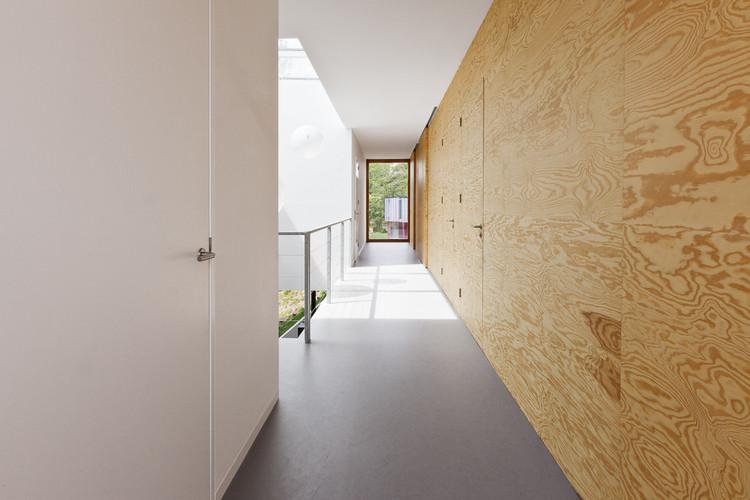.jpg?1584977960)
As people are spending more and more time inside their homes, offices, and other closed areas, it is important to ensure that these spaces are safe and healthy environments, especially indoor areas designed for children and seniors. In recent years, several of the materials that shape the spaces we inhabit and directly influence the quality of the air we breathe have increasingly used a potentially dangerous chemical compound. This compound is called formaldehyde.

In simple words, formaldehyde is a colorless and flammable gas that, at room temperature, has a strong odor. Exposure to this gas can have adverse effects on the respiratory system, eyes, and skin. The most common symptoms are irritation (in the eyes, nose, and throat), tears, nasal burns, cough, bronchial spasms, lung irritation, and dermatitis. In extreme cases, it could cause cancer.
Where is Formaldehyde Found?
Formaldehyde is a byproduct of combustion and other natural processes. It can be found in various types of building materials, especially composite wood products and insulating materials.

However, in residential interiors it can also be found in:
- In gaseous form, through emissions from non-ventilated devices that burn fuel, such as gas stoves, firewood or kerosene.
- Adhesives, paints, lacquers, fabrics with permanent pressing, and some types of coatings and finishes.
- Preservatives used in some medicines, cosmetics, and cleaning products such as dishwashers and fabric softeners.
- Various fertilizers and pesticides.
- Cigarette smoke. Therefore, it is essential to avoid smoking indoors.
- Pressed wood products, made with adhesives containing urea-formaldehyde (UF) resins.
- Agglomerated wood products, used under floors or on shelves, cabinets, and furniture.
- Plywood panels, used for decorative wall coverings and in cabinets and furniture.
- Medium-density fiberboard or MDF, used for drawer fronts, cabinets, and furniture countertops. These boards contain a higher proportion of resin than any other UF-pressed product and thus may emit higher quantities of formaldehyde.

If you are going to use a product with this type of material, you should consider the following information.
- Wooden Boards: Differences Between MDF, MDP, Plywood, and OSB
- Varnishes, Stains, Oils, Waxes: What are the Most Suitable Finishes for Wood?
Recommended Levels for Homes
Formaldehyde's risk to human health depends directly on its level of concentration in the air, the time of exposure, and the state of health of the person who is exposed to it. Average residential concentrations are generally well below 0.1 (ppm), whereas above 0.3 (ppm) is considered a significant amount. This happens, for example, when the wood products have been recently manufactured or recently pressed, since gas level decreases over time.

How can we Protect Homes and Interior Spaces from Formaldehyde?
1. Reduce the consumption of products that have high levels of formaldehyde in their composition, or choose those without added formaldehyde
Consideration should be given to using certified composite wood products, or products made of solid wood. Certifications restrict formaldehyde emissions, providing safer options. It is recommended to use wood products composed of phenol-formaldehyde resins (PF) since they emit formaldehyde at considerably lower rates than those composed of urea-formaldehyde resins (UF).
Also, it is important to verify that the materials do not have Formaldehyde added. The NAF (No Added Formaldehyde) classification is a rigorous standard in the measurement of formaldehyde emissions in the industry, according to CARB (California Air Resources Board).

2. Maximize Natural Ventilation
Formaldehyde emission levels can increase in hot and humid environments. Therefore, controlling these factors can contribute significantly to risk reduction. Natural ventilation is always welcome and is a critical ally in the quest to reduce the effects of formaldehyde emission in closed environments. If good natural ventilation is not feasible, a possible recourse is to incorporate air conditioning and dehumidifiers, which must be cleaned and drained frequently to avoid the growth of fungi, which are also very detrimental to the quality of the indoor air.
Check out some recommendations to enhance natural ventilation, here.

References
- What should I know about formaldehyde and indoor air quality? Available in this link. Accessed on March 23, 2020.
- Facts About Formaldehyde. Available in this link. Accessed on March 23, 2020.
- How you can protect yourself and your family from formaldehyde exposure. Available in this link. Accessed on March 23, 2020.
- California Air Resources Board. Fact Sheets – Formaldehyde. Available in this link. Accessed on March 23, 2020.


.jpg?1584977960)